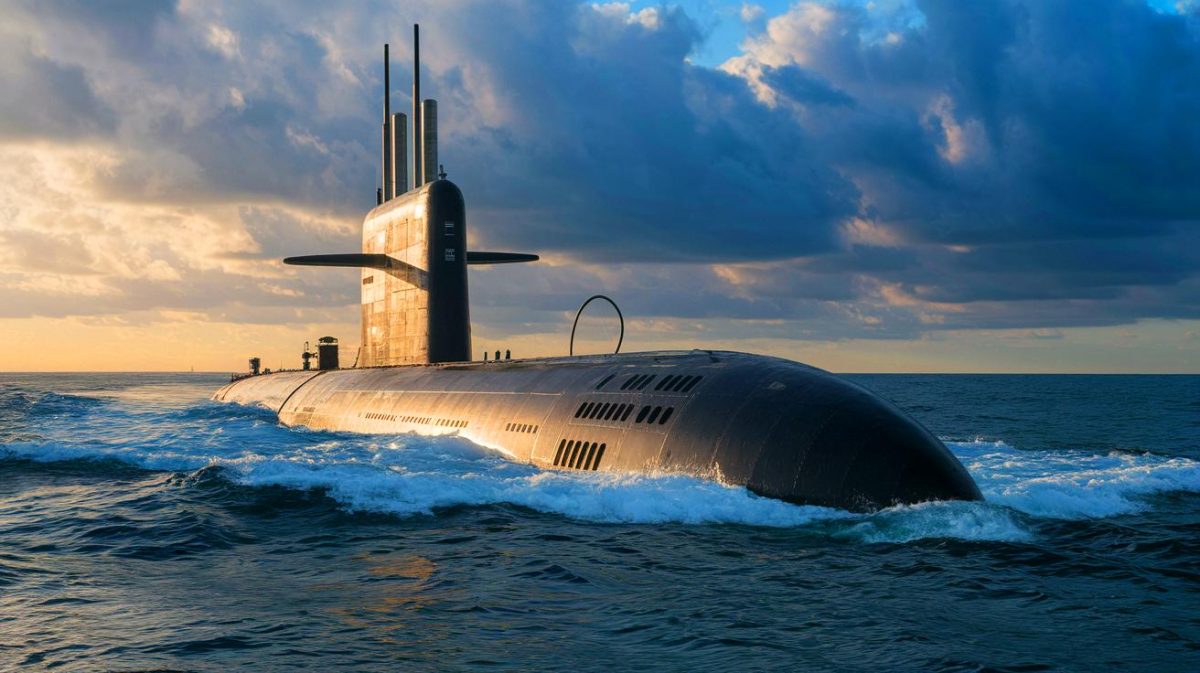| IN A NUTSHELL |
|
The United States is on the brink of reshaping its naval defense, with the Columbia-class submarine at the forefront of this transformation. As the US Navy’s latest advancement in maritime technology, the Columbia-class represents a new era of strategic deterrence. Built to replace the aging Ohio-class submarines, these vessels promise to enhance America’s underwater capabilities significantly. With groundbreaking engineering and state-of-the-art technology, the Columbia-class is destined to become a cornerstone of U.S. naval power for decades, ensuring military superiority well into the 2080s.
The Journey of Engineering Innovation
The creation of the Columbia-class submarine marks a remarkable achievement in engineering innovation. The process began years ago, with the Navy’s Naval Foundry and Propeller Center (NFPC) at the helm of developing the critical components needed to propel this underwater behemoth. From the first sub-component pour in 2019 to the final casting in 2021, the journey was paved with record-breaking achievements. NFPC’s efforts culminated in the largest nonferrous casting in US history, weighing over 260,000 pounds.
Throughout this endeavor, NFPC poured nearly 1 million pounds of bronze, demonstrating unparalleled dedication and skill. The components, once completed, are transported to General Dynamics-Electric Boat for the final assembly of the submarine. The Columbia-class is not just a feat of engineering; it is a testament to American ingenuity and the Navy’s commitment to maintaining a cutting-edge maritime presence.
A New Era in Naval Defense
The Columbia-class submarine represents a significant leap forward in naval defense capabilities. As the largest nuclear submarine ever built by the United States, it boasts an impressive submerged displacement of 20,810 long tons. Measuring 560 feet in length, with a beam of 43 feet, this submarine is designed for maximum efficiency and stealth. Equipped with a nuclear reactor and a turbo-electric drive system, it offers an unlimited operational range, a crucial factor in maintaining a strategic advantage.
The Columbia-class is expected to serve for approximately 42 years, with each vessel conducting about 124 deterrent patrols. Its design incorporates a life-of-the-ship nuclear fuel core, eliminating the need for mid-life refueling, a necessity in the older Ohio-class submarines. This shift not only enhances operational readiness but also underscores the Navy’s strategic focus on sustained deterrence.
Advanced Features and Capabilities
Equipped with state-of-the-art technology, the Columbia-class submarine is designed for superior performance in various operational scenarios. It will feature X-shaped stern control surfaces and sail-mounted dive planes, offering enhanced maneuverability and diving efficiency. The integration of a nuclear electric drive and pump-jet propulsor ensures quiet operation, a vital characteristic for stealth missions.
The submarine’s advanced sonar systems, including the large aperture bow (LAB) sonar and stern area systems (SAS), provide superior detection capabilities, making it a formidable asset in surveillance and combat situations. The Columbia-class is a symbol of American naval prowess, capable of maintaining maritime dominance well into the future.
Challenges and Future Outlook
Despite the groundbreaking advancements, the Columbia-class program has faced its share of challenges. A delivery review in April 2024, ordered by Navy Secretary Carlos Del Toro, indicated potential delays. The first vessel, the USS District of Columbia (SSBN 826), initially slated for delivery in October 2027, might be delayed until 2028 or even early 2029. These setbacks highlight the complexities involved in producing such sophisticated vessels.
However, the Navy remains committed to ensuring the Columbia-class becomes a reality, with subsequent submarines scheduled for delivery in the early 2030s. As the backbone of the nation’s strategic deterrent, these submarines will play a crucial role in maintaining global stability. The Columbia-class is more than just a military asset; it is a testament to the US’s commitment to peace through strength.
The introduction of the Columbia-class submarine marks a pivotal moment in US naval history. As these vessels prepare to take their place in the fleet, they promise to redefine maritime strategy and deterrence. With cutting-edge technology and unprecedented capabilities, the Columbia-class stands as a beacon of American innovation. As the future unfolds, one must wonder: how will these advancements continue to shape global naval dynamics and influence the balance of power on the high seas?
Did you like it? 4.7/5 (23)






Wow, this is incredible! How long did it take to design and build this behemoth? 🚢
Can it really go anywhere in the world without refueling? That’s insane!
I’m curious, what makes the Columbia-class so much more advanced than previous submarines?